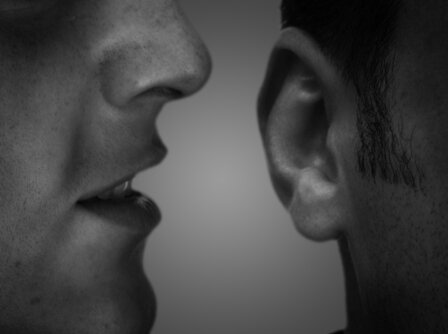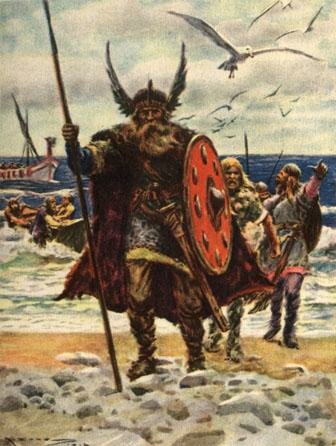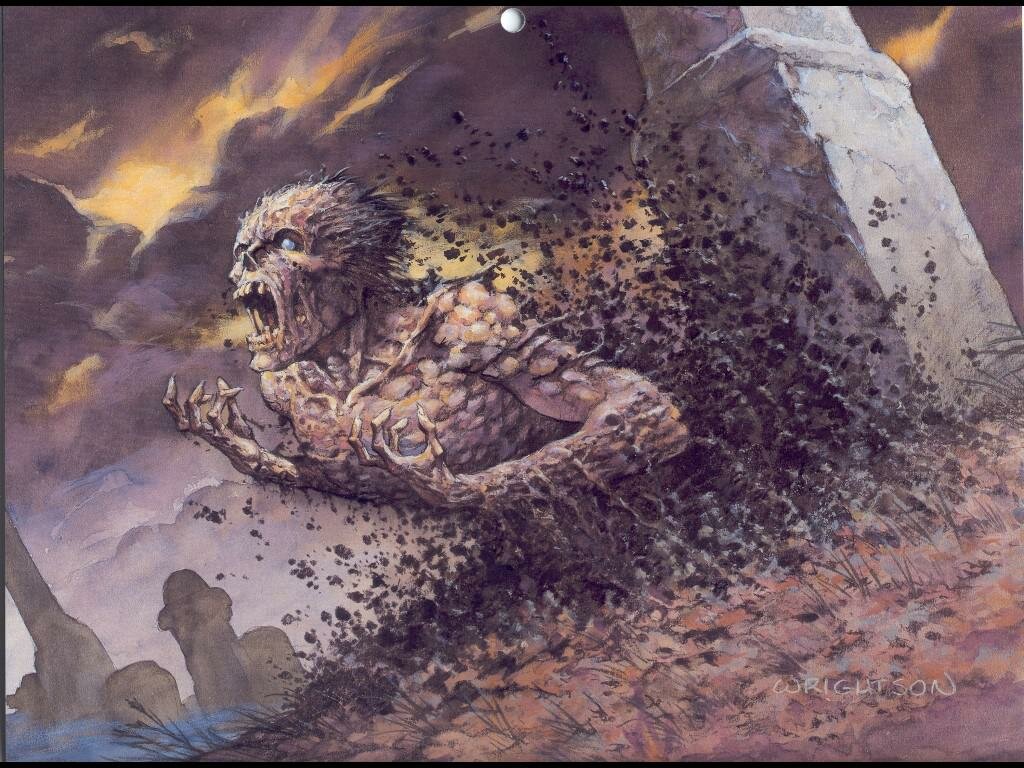Top 10 Most Controversial Paintings
Suggested by SMSFor centuries, artists have been at the forefront of major cultural shifts. They have challenged authority, forces us to reconsider our social conventions, and even taunted traditional methods and ideas of art. As tends to happen, though, most art may shock viewers initially, but over time, the same art comes to be revered as important both for social history and art history. Many of the great, controversial artwork wanted exactly that: to push people to conceive of their world in a new way. Ironically, scandalous artwork succeeds and fails at the same time. When society adopts a new way of experiencing the world as a result of the art, then it succeeded. However, its popular acceptance means it no longer pushes us to think, and thus it fails. It’s a paradox that all great controversial artwork embraces. This list includes paintings from as far back as 1486 and up to the present day. They encompass political, religious, artistic, and sexual controversies. Some were controversial only to a specific group of people, and others were controversial on a broader scale. There are many more paintings that could have been listed, but there are 10 of the most controversial.
10. One Nation Under Socialism by Jon McNaughton

The most recent painting on this list is Jon McNaughton’s One Nation Under Socialism. McNaughton has been the subject of controversy for more than one painting that depicts President Barack Obama in a very negative light. In this painting, McNaughton paints Obama holding the U.S. Constitution while it burns and pointing to the flame. The incendiary painting quickly went viral and stirred outrage on the Internet.
Critics have questioned the merits of the painting, stating that it doesn’t communicate the accusation of the title. Some feel that, rather than challenging accepted mores or artistic conventions, McNaughton’s piece is more of a simple polemic that is intended for shock value, rather than prompting discussion or a change in how society thinks. Either way, it earned enough of a reputation that the artist was offered $300,000 for the painting.
9. The Gross Clinic by Thomas Eakins

Thomas Eakins’s classic painting shows Dr. Samuel D. Gross lecturing students at Jefferson Medical College while demonstrating surgical procedures. Eakins is considered one of the most important painters in American history. The 1875 painting is a prime example of realism, in which an artist seeks to portray events with objectivity, as they really are. At the time of its exhibition, though, some felt it was a little “too” real.
The painting is often praised for showing surgery as a viable method of healing, rather than simply a means of amputating limbs. The raw, bloody violence of the act of surgery, though, is on full display. The surgeons, including Dr. Gross himself, all have bare, bloody hands, as they slice into a body. At the time, critics credited the painting for its power and allure, but condemned it for subjecting audiences to a subject that may not sit well with people’s nerves and may sicken them.
8. Virgin of the Rocks by Leonardo da Vinci

Virgin of the Rocks is the name of two paintings, nearly identical, by the Renaissance painter (and jack of everything) Leonardo da Vinci. One of the paintings hangs at the Louvre, while the other (later) version is in a London museum. The earlier painting that hangs in the Louvre, completed in 1486, was the source of controversy at the time it was shown. Both paintings depict the Immaculate Conception, or the belief that Jesus was conceived by Mary while she was a virgin, but the paintings have some differences. The earlier painting, the angel over Mary’s shoulder looks directly at the viewer, instead of staring at the ground, and the angel’s hand is raised and pointing at John the Baptist, rather than resting on its knee.
What really got to the viewers at that time, though, is the absence of halos in the earlier painting. Mary is revered by the Catholic Church, which was dominant at that time, as a saint and the mother of Christ. Painting her without a halo and with an angel pointing at John the Baptist was seen as diminishing the importance of Mary and the baby Jesus. The later painting included the halos and changed the angel to give the painting a more traditional, reverent appearance.
7. Olympia by Édouard Manet

Édouard Manet is widely known as one of the key artists to usher in the Impressionist movement, in which short, choppy strokes the blended to create beautiful images from afar, but lost all definition up close. In Olympia, Monet turned to the female nude, as so many painters had done before, in a style reminiscent of Goya’s La Maja Desnuda. Manet’s painting, which was completed in 1863 and accepted by the Paris Salon in 1865, immediately caused a scandal.
The woman, a self-assured prostitute, looks out at observers in a confrontational manner, while her servant offers her flowers from a suitor. The public was appalled by the vulgarity of the painting, the abundance of sexual symbols – such as an orchid and up-swept hair – and the sexual rebellion symbolized by the black cat at the foot of the bed. The woman’s left hand, too, which mimicked Titian’s Venus of Urbino, was seen as a mockery. While the left hand of Titian’s Venus casually covers her genitals, the hand of Manet’s nude seems tense, almost forcefully blocking her genitalia from the viewer’s gaze in an unnatural way.
Manet’s style raised some hackles by deviating from accepted standards of painting. The models nudity is brightly emphasized by the light colors. The short brushstrokes – the hallmark of Impressionism – also gave the woman a harder look, as opposed to the soft, dim appearance of earlier nudes.
6. Les Demoiselles d’Avignon by Pablo Picasso

Picasso’s unnerving 1907 painting Les Demoiselles d’Avignon shows five nude female prostitutes with startling appearances. Far from the classical female nudes, the five prostitutes all demonstrated the hard-angled and unnatural style that made Picasso so famous. Scholars consider the painting a seminal work in developing both modern art and cubism.
Similar to Manet’s Olympia, the women in Picasso’s painting look at the viewer in a confrontational manner. The distortion of their faces and the sharpness of their bodies appear aggressive, a far cry from the soft, appealing nude of earlier centuries. In addition, two of the nudes have faces that resemble African tribal masks. The painting’s blending of styles and it’s revolutionary appearance caused controversy among the public and the art community itself. It was deemed “immoral” in large part because of the savage appearance of the women.
5. Self-Portrait by Albrecht Durer

Albrecht Durer was a German painter who lived from 1471 to 1528, during a time when thinkers and artists from northern Europe were beginning to adopt the Renaissance humanism that blossomed in Italy. The humanist focus on individual intellect, scientific inquiry, and the identify of humankind apart from God was a revolutionary direction away from, and challenge to, the religious dominance of the Middle Ages. Albrecht Durer is widely considered one of the most important painters of this Northern Renaissance.
His Self-Portrait, though seeming tame by our standards, was highly controversial in its time. Durer positions himself in a position typically reserved for Christ. The way he faces the viewer, the way he forms his hand over the middle of his chest – these were all immediately reminiscent to viewers in that time of Jesus in the act of offering his blessing. Durer’s painting, in essence, make himself parallel to Christ, and that was simply not acceptable in his time.
4. Madame X by John Singer Sargent

The subject of Madame X was an American expatriate who had married a French banker and was known for her good looks and infidelities. She had apparently been very proud of her appearance and was not shy about showing it off. The American portrait painter John Singer Sargent painted her, not on commission, but as a study in opposition. The woman’s dark dress against her pale skin, along with her beauty, was intended to appeal to the eye and establish Singer as a portrait painter in Paris, where the painting was exhibited.
The public, though, was shocked by Singer’s portrait, in particular because the identity of the model was clear and came with the baggage of her questionable moral reputation. In addition, Singer had painted the model with one dress strap off the shoulder, hanging loosely. At the time, in 1884, this was too much, even for a Parisian audience. Against public pressure, Sargent repainted the shoulder to bring the strap up, but the reception was already too poor to recover, and Sargent soon left Paris permanently under a cloud of humiliation.
3. La Maja Desnuda by Francisco Goya
Spanish painter Francisco Goya’s painting La Maja Desnuda was so controversial that he painted a second, censored version. The painting featured a fully nude woman lounging on a bed with two large pillows. It was completed between 1797 and 1800 and is said to be the first instance of female pubic hairs being visible on a large Western painting. The image was so offensive to authorities that Goya was summoned during the Spanish Inquisition to reveal who had commissioned the painting.
The identity of the woman is unknown. Some possibilities have been suggested, but there is no agreement among scholars, and some have even said the woman may be a composite of several women in Goya’s life. Either way, the woman’s nudity caused enough backlash from the ecclesiastical authorities that Goya painted a second version, showing the same woman in the same position, but having her clothed. The two paintings are both Museo del Prado in Madrid, typically hanging beside each other.
2. The Guitar Lesson by Balthasar Klossowski de Rola

Better known as Balthus, de Rola was a Polish-French artist who first came to prominence in the 1930s. He notoriously resisted efforts by others to create a biographical or bibliographic record of his life or his work. He wanted all focus to be on viewing the artwork itself, not reading about it. Picasso was an early admirer of Balthus’s work, though Balthus rejected the artistic movement of Cubism, which became the hallmark of Picasso’s artistic career.
Many of Balthus’s paintings involve erotic positions or themes with young girls. His painting The Guitar Lesson caused a stir for its eroticism between an older woman and a young girl. The painting was part of Balthus’s first exhibition at Paris when he was just 26 years old and set a tone for his later work. The Guitar Lesson’s depiction of an older women positioning a young girl like a guitar on her lap, with one hand pulling the girl’s hair, and the other hand located at the girl’s exposed genitals, shocked those who saw it.
1. Goddess Lakshmi Naked on Shri Ganesh’s Head by MF Hussain

Maqbool Fida Hussain, better known as MF, has been called the “Picasso of India” and was one of the more controversial painters to come from the region. Raised a Muslim but indifferent to religion, Hussain adopted Hindu deities for visual effect and frequently depicted them nude or in compromising positions, such as Goddess Lakshmi Naked on Shri Ganesh’s Head. His artwork angered Hindu nationalist groups so much that from the 1990s until his death in 2011 they had engaged in efforts to intimidate him and encouraged violence against the artist.
After his artwork was printed in a Hindu magazine in 1996, as many as eight criminal complaints were filed against him, which were ultimately dismissed by courts in 2004. In 2006, though, he was again charged for depicting Hindu deities in the nude, which was considered “hurting sentiments of people.” Despite the outrage and legal efforts of his critics, Hussain is widely credited with influencing an entire generation of artists in India.










